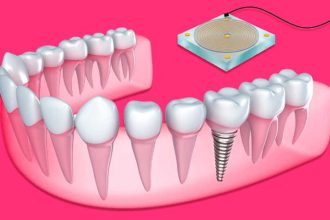When it comes to keeping our ultrasonic cleaners in peak condition, there are many things we
should and shouldn’t do to keep them functioning smoothly. From this article you will learn how to act so that you or those around you are not harmed. Remember that following safety rules is very important.
Here is a list of some of the most important dos and don’ts regarding ultrasonic industrial cleaning systems.
Dos
- As a safety precaution, we should always disconnect and empty the cleaning solution from our ultrasonic cleaner before recharging it. The heating elements can overheat and fail if they are accidentally left on. Water and electricity don’t mix, and excessive splashing may cause harm to people.
- Detergent should be drained and cleaned from the tank regularly. The buildup of grime in the bath reduces effectiveness of ultrasonic cleaning by obstructing the waves and reducing their power. The filtering system may be unable to remove the heavier muck and filth that falls off the cleaned pieces and settles at the bottom of the tank. The bottom of the tank can be cleaned with a cloth or cold water.
- Replace the filters in the filtration system on a regularly. Much of the dirt and debris
that is deposited on a part’s surface by ultrasonic cleaning will float to the top of the
detergent and be removed by the filtering system. It’s important to change the filters often so that the cleaning detergent can do its job well and quickly.
- Use water-based detergents. Solvent-based cleaning product should not be used in an ultrasonic cleaner, since they could damage the stainless steel surface of the tank. Solvents can also be harmful to human health. Never use a solvent with a flash point lower than 200 degrees Fahrenheit!

- If the parts are covered with heavy, oily or loose contaminants, wipe or spray them down before putting them in the ultrasonic machine. The machine will clean even the grimiest parts, but removing some of the dirt beforehand will reduce the frequency of maintenance by reducing the amount of grime accumulating in the filters and tank bottom. No matter how much dirt is caked on, the cleaner will remove it all. However, as previously said, the dirt that is removed has to go someplace, and that “somewhere” is either the filters or the tank bottom, increasing the frequency at which we must do maintenance.
- Before you begin washing the components, de-gas the new detergent. If the gases (mostly air) in the new cleaning solution are not eliminated before the cleaning process starts, it will take longer for the components to become completely clean. All you need to do to de-gas is set the temperature to the target setting and run the cleaner empty for 10 minutes. To degas, all you have to do is raise the temperature on the unit to the correct setting and run the cleaner for 10 minutes with nothing else in it.
Don’ts
- Do not interfere with the unit’s electronic controls, transformer, or transducers, or attempt to fix it yourself. Do not use the device for anything other than cleaning. You might injure yourself and damage the equipment. Don’t use water or other liquids to clean the outside of the tank, control box, or electrical box.
- Never use an ultrasonic cleaner with flammable substances such as alcohol, gasoline, or any other flammable liquid in the tank. As they evaporate, they could cause a fire or explosion, or they could let out dangerous fumes into the workplace. If you want to use an ultrasonic cleaner while it is running, thermal gloves and goggles are a must. It is also important to note that working temperatures of 160 degrees Fahrenheit might cause burns.
- Do not fill the tank with chlorine bleach. Bleach makes cavitation less effective.
- Do not be full allow a large amount of debris to accumulate on the tank floor. To avoid cavitation erosion, do not place components directly on the bottom of the ultrasonic tank. This increases the risk of the tank leaking. In the unit, use a basket, a tray, or a suspension system to keep everything organized.
If you follow these guidelines, your equipment will be around for a long time.














